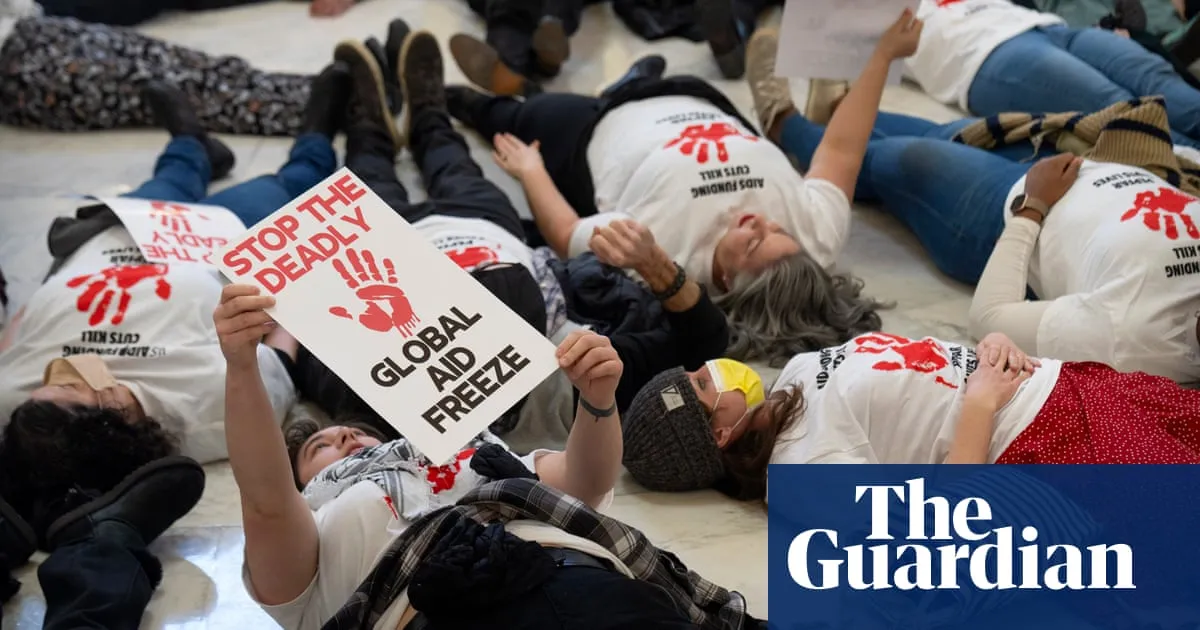
This year, global discussions surrounding the virtual elimination of HIV were anticipated to gain momentum. Leading researchers, including Prof. Sharon Lewin, expressed optimism, stating, “Within five years, we could see significant progress.” However, due to recent events, that optimism has turned into uncertainty. While scientific advancements had fueled hopes for the end of HIV as a public health threat, the Trump administration’s drastic cuts to US aid funding have severely impacted these efforts.
The abrupt cancellation of US foreign aid contracts has created a troubling landscape in HIV prevention. The US has canceled approximately 83% of its foreign aid contracts and dismantled USAid, the agency pivotal in coordinating these funds. A significant portion of these cuts affected the President’s Emergency Plan for Aids Relief (Pepfar) program, which has been instrumental since its inception in 2003, investing over $110 billion (£85 billion) and credited with saving 26 million lives while preventing millions of new infections.
In many African nations, Pepfar funding accounted for nearly all HIV-related expenditures. Prof. Lewin, the director of Melbourne University’s Institute for Infection and Immunity, warns of potential “dramatic increases in infections and deaths,” emphasizing the risk of losing decades of progress in combating HIV and AIDS.
Currently, there is no official disclosure regarding which contracts have been canceled, leaving many essential HIV prevention programs in disarray. Reports indicate that virtually all US-funded initiatives are no longer operational, with only a few programs still providing vital medications to prevent the transmission of HIV from pregnant women to their infants. Basic health services, including condom distribution, have faced significant disruptions, causing alarm among healthcare professionals.
Healthcare workers, including doctors and nurses, have been laid off, and patients are now resorting to hoarding medications or attempting to stretch their supplies, as highlighted by recent UNAids surveillance reports. UNAids itself has experienced a reduction of more than half of its funding, further exacerbating the crisis.
Even programs that have survived the funding cuts are navigating a tumultuous landscape. For instance, the Elizabeth Glaser Paediatric Aids Foundation has halted treatment for 85,000 individuals in Eswatini, including over 2,000 children. The cessation of tests for pregnant women and newborns, essential for preventing transmission, poses an immediate crisis. Prof. Lewin emphasizes that discontinuing medications not only jeopardizes the health of individuals with HIV but also increases the risk of further infections.
Despite the challenges, optimism remains in the scientific community. At the recent Conference on Retroviruses and Opportunistic Infections held in San Francisco, researchers discussed promising developments, including a potential once-a-year injection for HIV prevention. The drug lenacapavir has generated excitement, with trial results indicating that a six-monthly injection could effectively prevent HIV. Recent findings from Gilead suggest that modifications to the drug's formula could extend its protective effects even further.
However, the overall mood at the conference was somber, as attendees voiced concerns about the future of research funding, particularly from the US National Institutes of Health. Some researchers have been pressured to eliminate their names from studies connected to diversity, equity, and inclusion (DEI) initiatives, despite DEI's crucial role in the HIV response.
In 2022, a staggering 55% of new HIV infections occurred among key populations, including gay men, sex workers, transgender individuals, and people who inject drugs. Prof. Linda-Gail Bekker from South Africa’s Desmond Tutu Health Foundation reported significant setbacks, including the cancellation of US funding for trials of potential HIV vaccines across eight countries. The urgency to resume these trials is apparent, as many vaccines are at risk of expiring.
Prof. Bekker led a trial demonstrating that lenacapavir provided 100% protection for young women in sub-Saharan Africa, yet she now fears that HIV/AIDS prevention efforts may completely “fall off the radar.” The global community had previously made strides toward the United Nations’ goal of eradicating AIDS by 2030, with a five-year strategy focused on innovative tools to reduce reliance on foreign aid. However, the current funding crisis threatens to derail these advancements.
As efforts to control AIDS enter their final stages, the need for a sustainable approach becomes increasingly urgent. Governments will need to prioritize treatment, but without adequate funding, reaching marginalized groups—especially those whose existence is often criminalized—will be a daunting challenge. Prof. Bekker expresses concern over the reliance on government support for outreach, highlighting that young girls may hesitate to use government clinics due to societal stigma.
Despite the dire circumstances, some see this moment as an opportunity for greater local ownership. Beatriz Grinsztejn, president of the International Aids Society, emphasizes that while funding cuts pose critical risks, they also provide a chance for African leadership to emerge in HIV responses. There are plans for Nigeria to manufacture its own HIV drugs and tests, which could strengthen local health systems.
Christine Stegling, deputy director of UNAids, stresses the need for a concerted effort to create sustainable domestic HIV programs. While the goal of ending AIDS by 2030 remains achievable, rapid action is essential. “We have a short window of opportunity,” she asserts, urging the global community to rekindle the determination that once drove efforts to ensure treatment accessibility in the Global South.
The future of HIV prevention and treatment hangs in the balance, necessitating innovative strategies to overcome the challenges posed by funding cuts and to ensure that vulnerable populations continue to receive the care and support they need.